Bone cultures are always highly appreciated by gardeners who try to plant in their garden and grow a variety of varieties of these trees. Plums are one of the most popular garden trees that can be found in almost every yard. These thermal-loving trees give great yields of delicious and fragrant bone fruits, which can then be used to prepare various conservation. Everyone has long been accustomed to draining is a fruit tree that is grown to obtain a crop. However, due to the work of world breeders, decorative varieties of plums appeared in the culture, which began to be used not only to produce delicious fruits, but also for decorating the site. Cystene plum is a hybrid variety of plums and cherries, which many gardeners are used to create unique garden compositions.
To understand all the nuances of cultivation of such a culture, in this article we will consider the features and description of the plums of cystic, and also give important moments and rules for landing and care for this type of bone culture.
Features and morphological description of Cystene plums
Cystene plum is a tree-like plant of plums or lat. Prunus, which, in turn, refers to a large family of pink. This includes cherry, cherry, apricot, church, sea buckthorn and other bone cultures, which breeders cross each other to obtain completely new hybrid varieties. Thus, in the culture there was a kind of plum of dwarf or cystene plums, derived in 1910 by American scientist Botany Nils Ebbene Hansen. This scientist in his work crossed the hybrid variety of Alyci or plum of pussard, which is characterized by spectacular reddish foliage, and the cherry is sandy.
The historical origin of the scientific name of the PRUNUS plums is not known for certain, but many scientists are inclined to believe that thus called the Turn. We all the usual name "plum" occurred from the Latin word "Linos", which in translation denotes "the one that has a lilac-blue color." This is due to the shade of the fruits of most varieties of plums.
The Motherland of Cystene plum is the territory of North America, where they first began to withdraw this hybrid variety and massive it to grown to decorate garden sites and landscape design. Pyshisard's plum and cystegen related cultural varieties that have a large decorative value and are valued for their beautiful and bright foliage more than the taste and yield of their fruits.
DESCRIPTION OF CISTENES:
- Cystegen plum is a dwarf variety of this kind.
- This bone plant grows in the form of leaf falling busta or small tree.
- Compact tree, whose root system is mostly superficial, but the main roots go far deep into. It gives a large number of root row, which in the future can be used to reproduce this species of plums.
- This is a one-tie shrub with a beautiful pyramidal or colonum-shaped crown, which is characterized by a weak branch. Krone is very thick, in shape can be oval or wide round.
- This variety of plums is often vaccinated on the straps, which allows you to get a slim tree plum of cystegen.
- A shrub or a small cystic plum tree can reach only 2-2.5 meters, and in the central part of Russia, for example, in Moscow it is possible to raise this bone culture as much as possible by 1.5-2 meters. The drain can greatly grow, under favorable conditions the crown diameter can be about 2 meters.
- Krone is formed shortened, slightly pointed shoots of a dark red or burgundy shade. The bark is thin, shiny. Stems and branches of cystene plum are decorative, even in the absence of foliage and fruit such a plant will decorate the site.
- The drain of this type is a slowly growing shrub, which for the year can grow only up to 15 cm. Therefore, by 10 years, a young tree or shrub will be able to reach a height of only 1.5 meters. At the same time, Cystene is a long-liver, will delight with its bright appearance and fruits for about 50 years.
- Cystene plum leaves are its main decorative value. And all thanks to their shade. Under the dissolution of the tree leaves, dark purple-red, but over time they become even darker with a bronze tint.
- The leaves are narrow lancing or elliptical, pointed with a served edge. Locked on the branches alternately.
- The sheet plate has a shiny glossy surface, in length can reach about 10-12 cm, and wide up to 5 cm. They have a very remarkable feature - stick to deep autumn branches.
- Before the appearance of leaves on branches or simultaneously with them, cystic plums appear.
- Flowers are single, in diameter can reach 2.5-3 cm. Present a cup-shaped flower, which at the very beginning of flowering have a pinkish hue, and then become white with a red middle.
- Cystene plum flowers are very fragrant, blooming on a tree in large quantities.
- The flowering period of this culture falls at about the middle and the end of the spring.
- After biting inflorescences on the branches, there are few plum fruits.
- Fruits are fully ripening at the end of summer and acquire a dark purple shade. There are small, edible bonice berries, which can be about 2 cm in diameter.
- Edible cystic plum berries are used to prepare jam, jams, jumped.
- This species of plum refers to the climatic zone of frost resistance 5a - the tree can withstand frosts up to minus 28 degrees. However, in the middle lane, young seedlings are recommended to cover.
- Culture has good resistance to air basement, so it can be used for urban plantings.
- This variety is widely used to create unusual garden compositions. Cystene is planted as soliter plants, combine it with other decorative cultures. It is often used this bright shrub to create a living hedge, as the culture is well trimming and is distinguished by a large density of shoots.
- Cystene plum is highly decorative culture throughout the season, value is the form of its crown, painting of shoots and leaves, flowers and fruits.
Cystene plum reproduction: the most common ways
Drain Cystene without problems can be obtained independently, using suitable propagation methods. This culture, like other representatives of the Pink family, can multiply by a seed and vegetative way. However, in contrast to the reproduction of the bone, vegetative methods are more efficient and reliable. That is why most gardeners use reproduction with stalling, root offspring, vaccine. Consider the characteristic and features of each variant of obtaining the planting material of Cystene plums.
Cystene plum breeding bone
- This method of reproduction is used much less often, however, you can try to experiment. The main thing is to remember that as a result you can get a young plant that did not receive all the maternal signs.
- Semyon reproduction is also used to obtain a collection for further vaccination of varietal plants, for example, cystic plums.
- First of all, it is necessary to wait for the full ripening of fruits, and then take a few strokes and remove the bones of them. After that, be sure to rinse the bones and dry them.
- Next, wrap the bones into a wet fabric and place the planting material in the refrigerator for stratification. Custain plum bones needed for quite a long time, from about the middle of the autumn until the beginning of March.
- In March, the bones are planted in pre-prepared planting pots, which are filled with nutrient soil.
- Further departure lies in regular watering, feeding and rooting landings until the seedlings are going.
- In the fall, when the seedlings are growing and fixed, they are planted in a greenhouse for rearing.
- Another one year, the seedlings are contained in greenhouse, after which they can be planted for a permanent place or use as a flow to obtain a plum hybrid.
Cystene plum reproduction root offspring
- This method of reproduction is considered the most common, since plum trees give a large amount of frost suitable.
- Every year, Cystegen plum gives a lot of stroke, which must be carved. Therefore, during this period, you can use this planting material to obtain young seedlings.
- Choose a strong and developed offspring around the tree at a sufficient distance from an adult instance.
- Carefully dig the root of the selected offspring and shovel or knife cut off the young proof from the parent plant at about 20 cm from the stem.
- Gently remove the process from the soil. So that the young seedling does not ill infectious diseases, it is recommended to treat the garden harr.
- After that, the process is planted for a permanent place.
- If after separating the process, you noticed that it is still very small, it is recommended to plant data for fuses.
Plum breeding cystene green cuttings
- This method of reproduction is also often used by gardeners, as it gives a good positive result of the survival of young seedlings.
- The coverage of cystene plums must be carried out in June. It is also important to remember that it is best to cut the planting material early in the morning or on a cloudy day.
- Choose strong and healthy shoots on a young tree of plums and cut the cuttings with a length of about 30-40 cm.
- Next you need to prepare cuttings for landing. To do this, the lower part of the cutting is cut into a sharp knife or the secateur and remove the bottom leaf, leaving it only a pet.
- Upper cut on a cutlery make over the top sheet.
- After that, it is recommended to put all cuttings into the water container for a while.
- Then all cuttings are associated together and lowered overnight in the container with a solution of growth accelerator or a root generation agent, for example, heteroacexin.
- To rouded the cuttings is necessarily necessary in a greenhouse or greenhouse. To do this, prepare a fairly large container and fill it with peat and sand. After that, we ride with water and the surfaces convene the surface.
- Cysterene plum cuttings are rooted at an angle of 45 degrees, blocking at the same time before the first leaf. It is important between cuttings to leave a distance of 5-7 cm.
- Capacity with cuttings must be covered with a kind of transparent dome. Periodically landing should be protected from direct sunlight.
- Further departure will be in regular watering.
- About a month later, the cuttings should be filtered with a solution of nitrogen fertilizers. And when the planting material is rooted, the dome can be removed.
- Before winter, all cuttings are digging, the roots are moss and wrapped in the film, after which they put them for storage in the basement or bury into the trench and covered with sawdust.
- The next spring cuttings are planted in a greenhouse and fuse over 2 years.
Plum breeding cystic vaccination
- The method of obtaining young plants by vaccination is also used quite often.
- It is necessary to have in hand to hold it and lead. As noted above, it is possible to grow in a bone of cystene plums, which in the future is useful for vaccinating the same plum.
- Conduct vaccination in several ways.
- The advent of the kidney is as follows. A T-shaped incision is placed on the stock, after which the bark is rejected. Next, from the variety of the cake, the kidney is cut with a strip of the cortex and is inserted into the incision. The bark is tightly pressed and the place of vaccination is tightly wrapped with a scotch.
- You can also vaccinate cuttings. To do this, the sharp knife is made to a sharp knife with a length of up to 2.5 cm and a depth of 1.5 cm. The cutlets for the lead is also clipped - the lower part is cut at an angle to the same length as the shelter on the stock. After that, the cutting of the cut is placed in a slice on the bottom and turns into the eyepulant film.
Preparation Before planting Cystene plums
Even a novice gardener or an amateur gardener will be able to grow on its plot. The landing process is no different landing in an open soil of other types of bone crops. The main thing in this event is to carefully and carefully carry out the preparatory stage, from which the final result will depend on.
Stage 1. Selection and purchase of planting material Cystene plums
- The most important stage in obtaining a beautiful and decorative shrub plum Cystene is the choice and preparation of the planting material.
- If you have on your site an adult tree of a given variety of plums, you can try to multiply it and get planting material. If you do not want to do this or do not have such a culture in your garden, then you can purchase the finished seating material.
- Custine plum saplings are recommended only in specialized garden centers or nurseries, which are professionally engaged in breeding plants. At the same time, nurseries look more preferable, since here you can get zoned seedlings that are already adapted to the climatic conditions of your region. This is especially true in the middle lane of Russia, where young seedlings are hidden for the winter.
- Younger seedlings in the nursery are sold in special plastic pots with the addition of prolonged fertilizers. This makes it easier to extract seedlings from the tank without strong damage to the root system.
- Higher seedlings can be sold with an earthen room on the roots that wrapped the wire mesh.
- Before buying, it is important to carefully examine the planting material. Since the shoots of Plum Cystene have a reddish-burgundy shade, they will not be able to sell another grade only if it is similar to decorative. Escapes must be strong and healthy, without visible damage and signs of diseases. Soil in the container must be clean and moistened.
Stage 2. Choosing a place and soil for planting Cystene plums
- The second important step before planting the plum of this variety in open ground is the choice of the most suitable place for culture.
- Cystegen's plum prefers to grow at open solar plots. This allows you to fully disclose all the paint of shoots and grade foliage.
- You can land a seedling in a small shadow, especially if it concerns the shading at midday time.
- This culture requires protected from strong winds and drafts of space.
- It is also important to choose a place in your site where the groundwater is lowered low, as the plum does not make the proximity of moisture to the roots.
- Cystegen's plum prefers to grow on fertile soils, it is desirable to find loams with good water permeability and breathability.
- The soil must have a neutral or weakly alkaline reaction, an increase in alkaline media is allowed.
- Before planting plum seedlings, it is important to carefully prepare the place you have chosen. For this, the site is well drunk, about 2 bayonet shovels. It is important to remember that landing pit is prepared in the fall. For this, it is necessary on the prepared area to dig holes in size twice as much as the volume of the root seedlock with an earthy room. If you missed this stage, the pits are prepared for about 2 weeks before landing.
Cystene plum planting technology
- Seedlings of plums of this variety can be both in spring and autumn. However, gardeners recommend using a spring landing, especially in the middle strip. So the plant will have time to root and grasp the onset of winter.
- Two weeks before landing, prepare landing pits. To do this, explode the plot, add dolomite flour into the soil, if the soil has a sour reaction. After that, the landing pit is digging a depth of 70 cm and a diameter of at least 70 cm. In this case, the upper layer is discarded, and the lower fertile is mixed with peat and humus.
- At the bottom of each landing pit, it is necessary to put a layer of drainage, especially if the groundwater climbs close to the surface. As a drainage, you can use broken brick or small stones.
- Next, a small hilly of the fertile soil is embanked on the drainage layer.
- If you bought seedlings with open roots, you can put them before planting in a container with water so that they wet well.
- In the landing pits, place neatly cystene plum saplings. If they grew in containers, to facilitate their extraction, it is recommended to shed water to richly, after which they together with an earthen room are placed in landing pits.
- Saplings fall asleep with soil from the top layer so that the root cake was 4 cm above the surface.
- Fall asleep is tight so that there are no emptiness in the pit.
- After planting, the seedlings are abundantly watering with water, and then murached peat or sawdust to prevent excessive evaporation of moisture.
Cystic plum growing agrotechnics: secrets and nuances of care
Caring for the drain of this type will not require difficult actions and high costs of strength and time. It is enough to water the plant in time, feed it and trim that the bone culture pleases you with a bright appearance and delicious fruits.
- Watering. Cystegen plum is not demanding of moisture by a plant, but regular watering is still needed, especially for young seedlings. For all the time of the vegetation of the tree, the soil around it must be moistened about 4-5 times, richly watered to a depth of up to 40 cm. It is also important to carry out one abundant watering in the fall before preparing plums by winter. Immediately after landing, young seedlings watered 1-2 times a week, in the hot season, the amount of irrigation increases to 3 times a week.
- Loosening and mulching. The root plum system is superficial, so looping must be carried out very carefully and not deep, removing all weeds at the same time. To reduce the amount of loosening and irrigation, it is necessary to update the top layer of mulch regularly.
- Feeding Organic fertilizers must be made once every 3 years, combining this process of leaving the soil loan in the rolling collar. Once in 2 years it is recommended to bring mineral fertilizers - nitrogen fertilizers are entered in spring, and phosphoric and potassium autumn.
- Cystic plum trimming. Croon of this type of plum is formed by shortened shoots that are tight and densely located to each other, so it is important to regularly trim, especially if you planted seedlings for living inges. Each year in the spring is carried out sanitary trimming, in the process of which all damaged and broken branches are removed. Once a year, forming trimming is also carried out, during which all weak or highly thickened branches are removed, and all shoots are shortened.
- Shelter for the winter. When planting seedlings of Cystene plums in the southern regions, it is not necessary to take care of the shelter. However, if you planted this plant in a colder place, then it is recommended to take care of the insulation of seedlings. For this, they are mulched by sawdust and fallen foliage, and the barrel turns into a dense material or coniferous legs to protect against rodents.
Plum Cystegen - Photo
Today, you can find a large number of reviews about Cystegen's disclosures that allow you to make sure that it is not only a tree bringing the crop of delicious fruits, but also a unique element of landscape design that will decorate the site throughout the season.

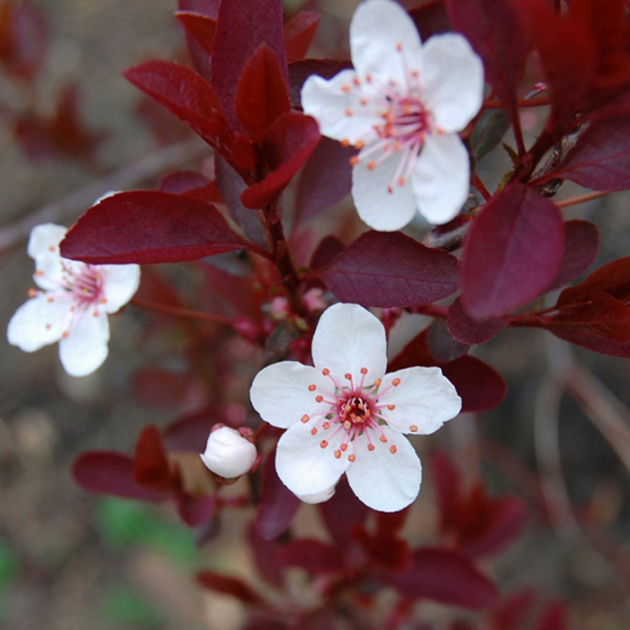
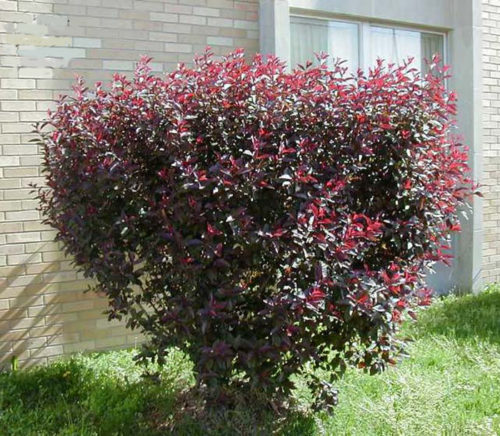
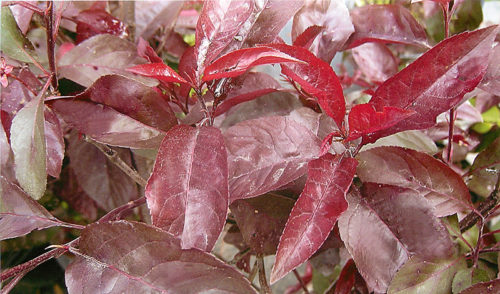
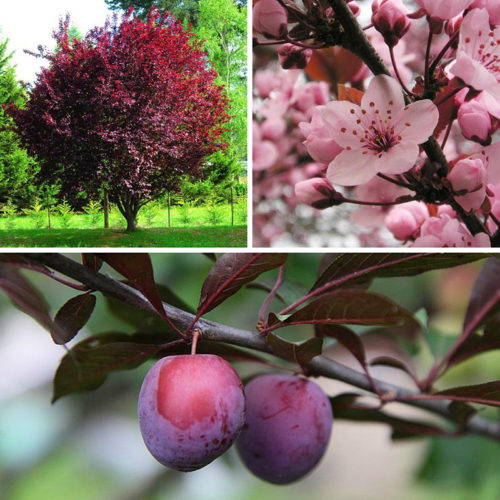
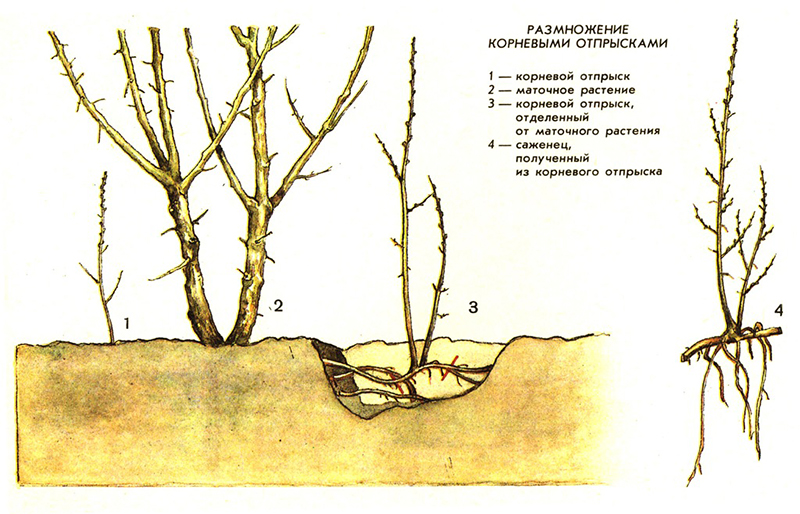
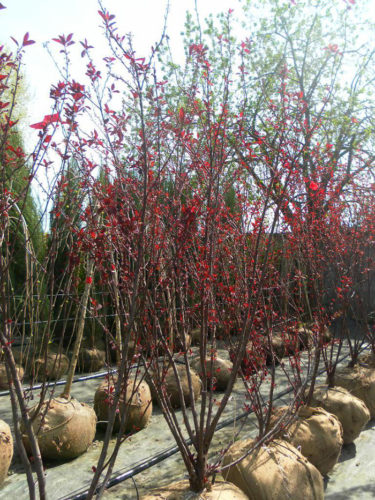
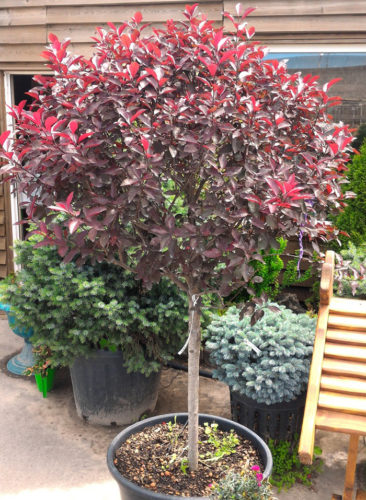
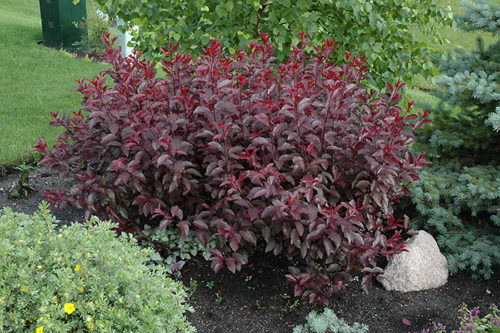
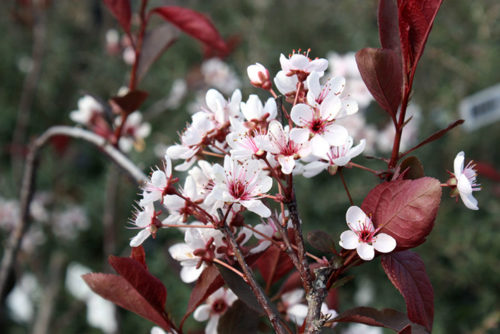
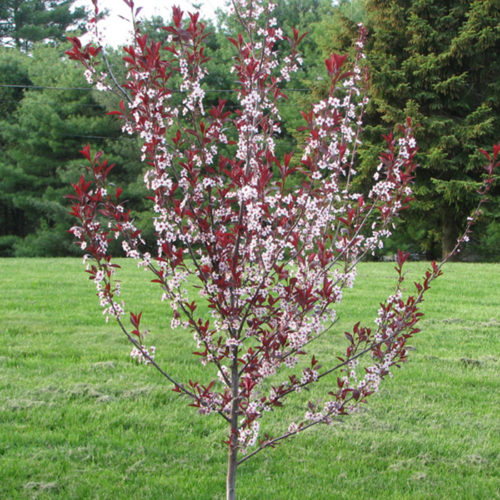
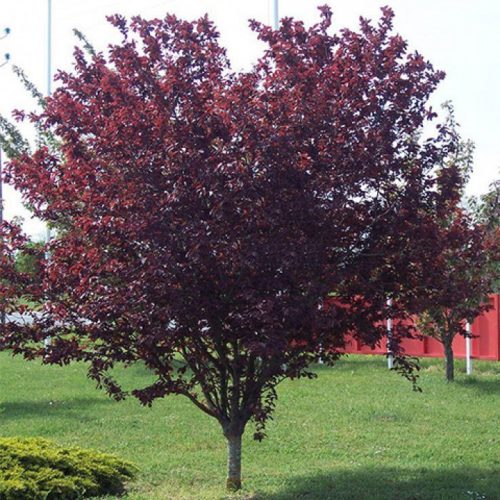
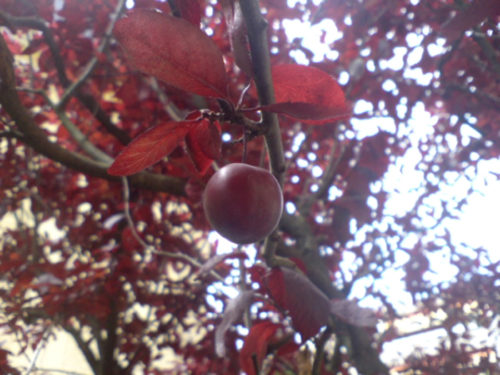
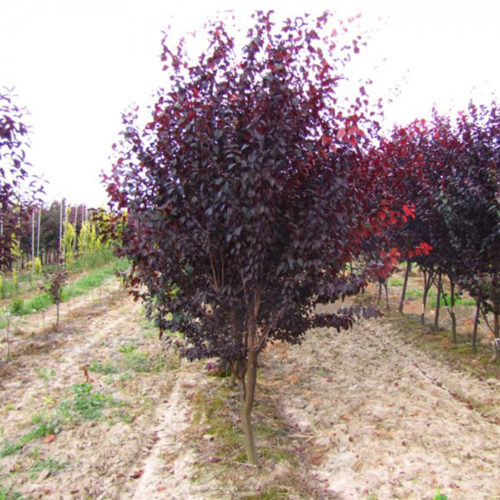
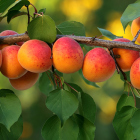
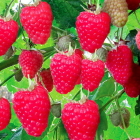
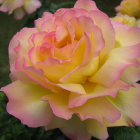
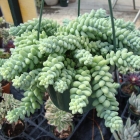
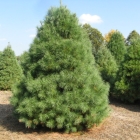
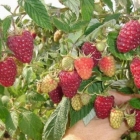
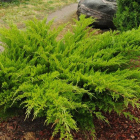
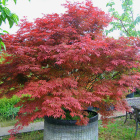
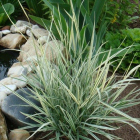
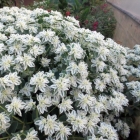
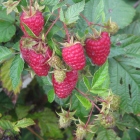
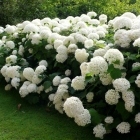
 Start a discussion ...
Start a discussion ...